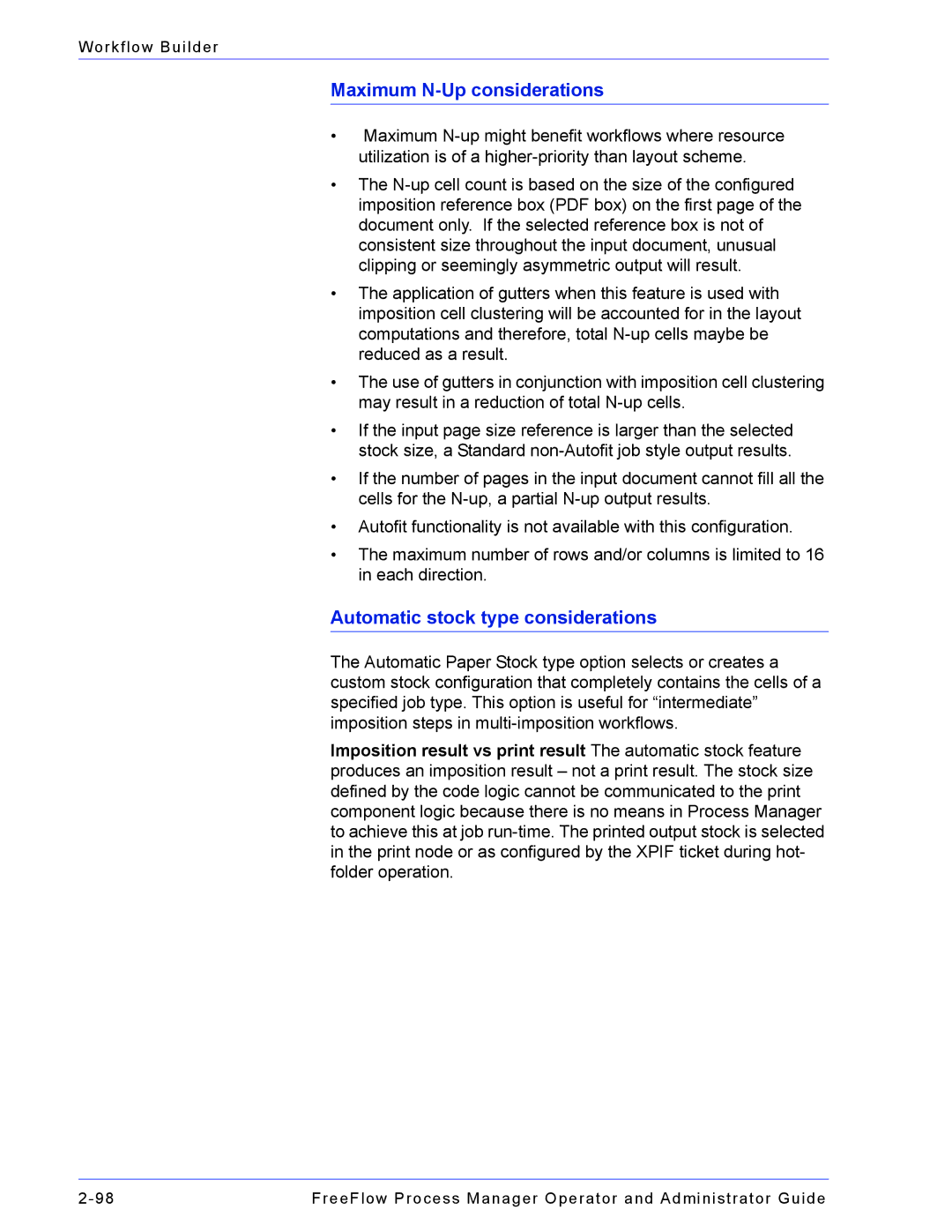
Workflow Builder
Maximum N-Up considerations
•Maximum
•The
•The application of gutters when this feature is used with imposition cell clustering will be accounted for in the layout computations and therefore, total
•The use of gutters in conjunction with imposition cell clustering may result in a reduction of total
•If the input page size reference is larger than the selected stock size, a Standard
•If the number of pages in the input document cannot fill all the cells for the
•Autofit functionality is not available with this configuration.
•The maximum number of rows and/or columns is limited to 16 in each direction.
Automatic stock type considerations
The Automatic Paper Stock type option selects or creates a custom stock configuration that completely contains the cells of a specified job type. This option is useful for “intermediate” imposition steps in
Imposition result vs print result The automatic stock feature produces an imposition result – not a print result. The stock size defined by the code logic cannot be communicated to the print component logic because there is no means in Process Manager to achieve this at job
FreeFlow Process Manager Operator and Administrator Guide |
